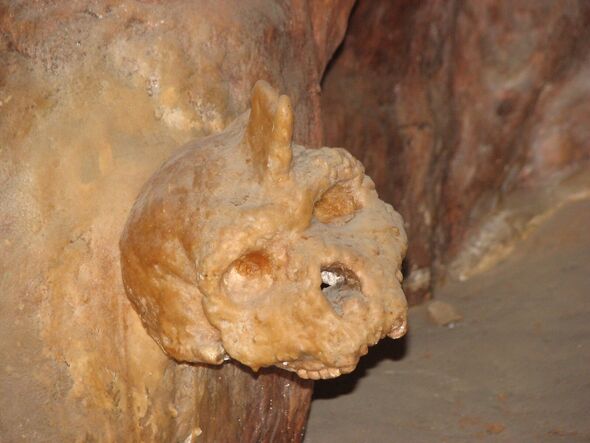Science
Archaeologists Uncover Age of 286,000-Year-Old Skull in Greece

The mystery surrounding a 286,000-year-old skull discovered in the Petralona Cave, located approximately 22 miles southeast of Thessaloniki, Greece, has made significant strides toward resolution. Researchers have long grappled with the skull’s classification within the Homo genus, noting its distinct differences from both Neanderthals and modern humans. Recently, a team from the Institut de Paléontologie Humaine has provided new insights that may finally clarify the skull’s age and evolutionary significance.
Dating the skull, which has remained elusive for decades, has posed substantial challenges. Earlier estimates ranged widely from 170,000 to 700,000 years. The latest study, titled “New U-series dates on the Petralona cranium, a key fossil in European human evolution,” has employed advanced U-series dating techniques to establish a more precise minimum age.
New Techniques Illuminate Ancient History
The research team utilized U-series dating, a method that takes advantage of the natural decay of uranium isotopes into thorium. By analyzing the ratio of uranium to thorium in calcite deposits that formed on the skull, researchers were able to pinpoint the skull’s age more accurately. This technique allows scientists to calculate the time since the uranium began to decay, providing a calibrated start date.
The study revealed a finite minimum age of 286,000 years, with a margin of error of plus or minus 9,000 years. This minimum age suggests that if the skull had been kept dry or covered, it could potentially be much older. The researchers concluded that the Petralona hominin belongs to a distinct and more primitive group than both Homo sapiens and Neanderthals. Their findings indicate that this ancient species coexisted with an evolving Neanderthal lineage during the later Middle Pleistocene in Europe.
The skull was first uncovered in 1960 by local villager Christos Sariannidis, who found it embedded in the wall of a small cavern within the Petralona Cave. Although the lower jaw is missing, the cranium itself is nearly intact. This fossil exhibits similarities to other notable finds, including specimens from Arago in France, Bodo in Ethiopia, and Kabwe in Zambia. Each of these fossils displays traits reminiscent of Homo erectus, such as pronounced brow ridges and a thick skull, while also indicating a slightly larger brain size typical of later hominin species.
Significance for Human Evolution
This breakthrough contributes valuable information to the ongoing study of human evolution, particularly in understanding the diversity of ancient human-like species in Europe. The Petralona skull is preserved at the Geology School of the Aristotle University of Thessaloniki, where it continues to be a focal point for researchers investigating the complexities of our evolutionary past.
As scholars build on this research, the implications for our understanding of early human history become clearer. The findings not only shed light on the characteristics of the Petralona hominin but also highlight the intricate web of evolutionary relationships among ancient human species. This new data will likely encourage further studies into the interactions and environments of these early populations, as well as their adaptations over time.
-

 World5 days ago
World5 days agoCoronation Street’s Shocking Murder Twist Reveals Family Secrets
-

 Entertainment4 months ago
Entertainment4 months agoKate Garraway Sells £2 Million Home Amid Financial Struggles
-

 Entertainment3 months ago
Entertainment3 months agoAnn Ming Reflects on ITV’s ‘I Fought the Law’ Drama
-

 Entertainment2 days ago
Entertainment2 days agoAndrew Pierce Confirms Departure from ITV’s Good Morning Britain
-

 Health3 months ago
Health3 months agoKatie Price Faces New Health Concerns After Cancer Symptoms Resurface
-

 Entertainment4 weeks ago
Entertainment4 weeks agoCoronation Street Fans React as Todd Faces Heartbreaking Choice
-

 World4 weeks ago
World4 weeks agoBailey Announces Heartbreaking Split from Rebecca After Reunion
-

 Entertainment1 week ago
Entertainment1 week agoTwo Stars Evicted from I’m A Celebrity Just Days Before Finale
-

 World1 week ago
World1 week agoKevin Sinfield Exceeds Fundraising Goal Ahead of Final Marathons
-

 Entertainment3 months ago
Entertainment3 months agoCoronation Street’s Carl Webster Faces Trouble with New Affairs
-

 Entertainment3 months ago
Entertainment3 months agoWhere is Tinder Swindler Simon Leviev? Latest Updates Revealed
-

 Entertainment4 months ago
Entertainment4 months agoMarkiplier Addresses AI Controversy During Livestream Response





















